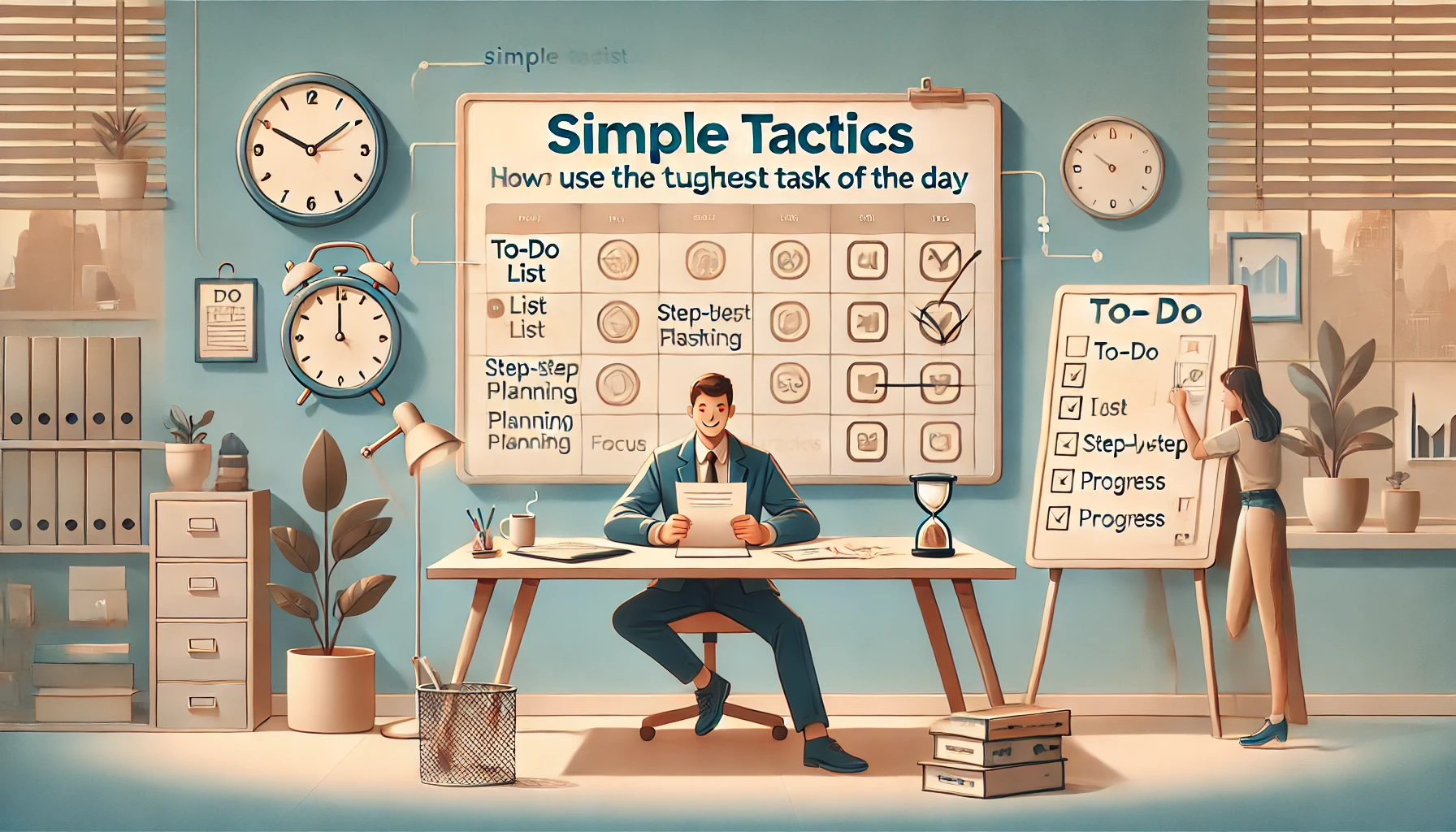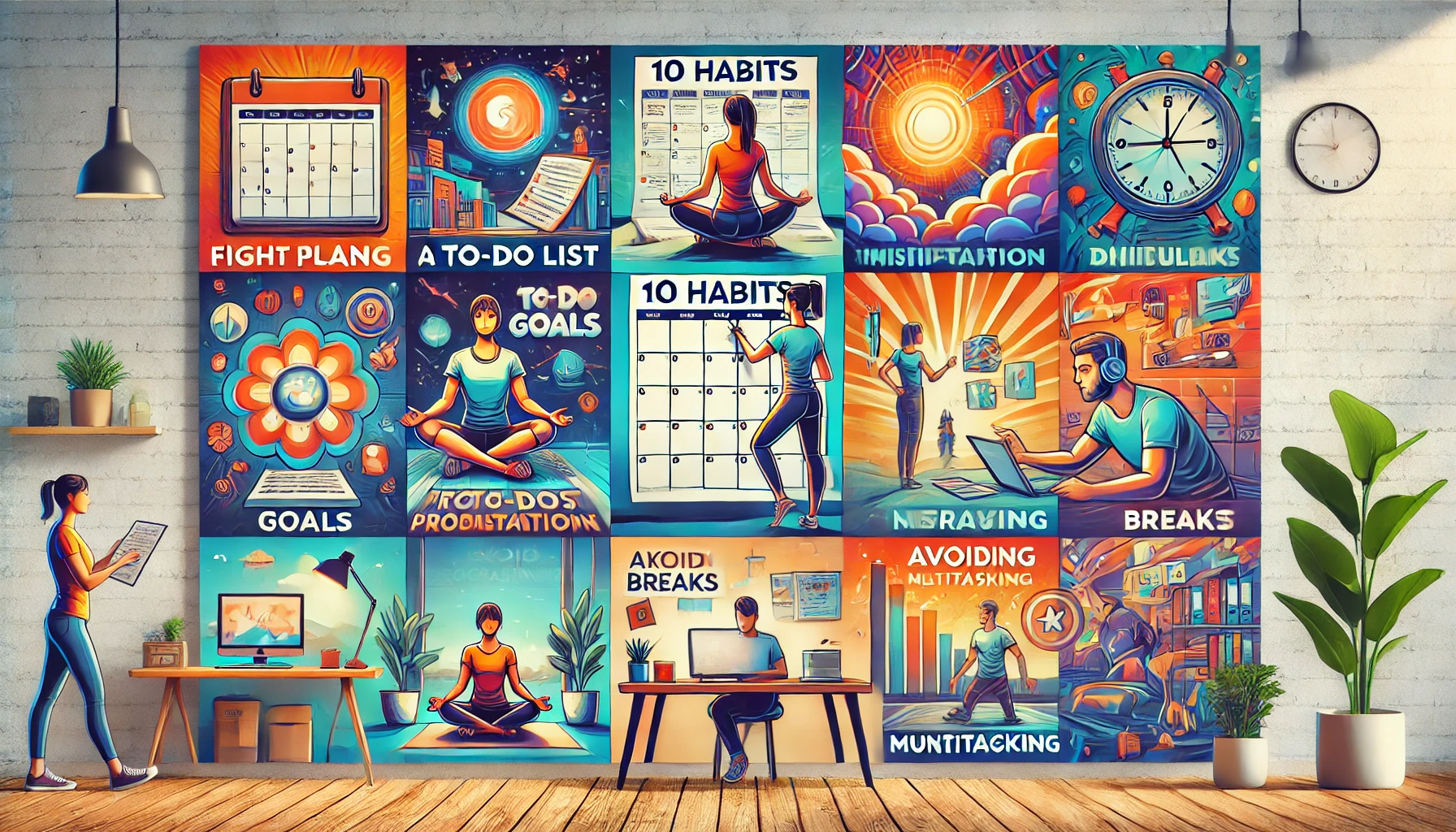Big tasks can feel intimidating. Whether it’s writing a long report, preparing for an important exam, or launching a new project, the sheer size of the task can lead to procrastination, stress, and mental fatigue.
But here’s the good news: breaking down large tasks into smaller, manageable steps makes them easier to start and complete. By using strategic techniques, you can reduce overwhelm, increase motivation, and make steady progress.
This guide will teach you how to break down big tasks effectively, so you can stay productive without feeling stuck.
Why Big Tasks Feel Overwhelming
When facing a large project, your brain struggles to process the entire workload at once. This leads to:
✅ Procrastination – Delaying the task because it feels too big to handle.
✅ Mental Fatigue – Overthinking instead of taking action.
✅ Fear of Failure – Worrying about perfection instead of making progress.
Breaking tasks into smaller steps removes these mental barriers and makes the work feel achievable.
Step-by-Step Guide to Breaking Down Big Tasks
1. Define the End Goal Clearly
Before breaking a task down, you need to know exactly what success looks like. A vague goal makes it harder to take action.
✅ How to Set a Clear Goal:
- Instead of “Write a research paper”, say “Write a 10-page paper on climate change with 5 sources.”
- Instead of “Get in shape”, say “Lose 5kg in 3 months by exercising 3 times per week.”
- Instead of “Learn French”, say “Learn 500 common words and hold a basic conversation in 6 months.”
A well-defined goal makes it easier to create a step-by-step plan.
2. Break It Down into Milestones
Once the goal is clear, divide it into major milestones—significant points of progress that guide you toward completion.
✅ Example: If your goal is to write a book, your milestones could be:
- Outline the book’s chapters.
- Write the first draft of each chapter.
- Edit and refine the content.
- Format and publish the book.
Each milestone acts as a checkpoint, keeping you on track without feeling overwhelmed.
3. Create Actionable Subtasks
Now, break each milestone into small, actionable tasks that can be completed in one sitting.
✅ Example: If your milestone is writing the first draft of a chapter, break it into:
- Research key points for the chapter.
- Write a rough outline.
- Write the first 500 words.
- Write the next 500 words.
- Review and refine the draft.
By focusing on small wins, you build momentum and make progress without stress.
4. Use the “Two-Minute Rule” to Get Started
One of the hardest parts of any big task is getting started. The Two-Minute Rule helps bypass procrastination by committing to just two minutes of work.
✅ How It Works:
- If you need to write a report, start by writing one sentence.
- If you need to exercise, commit to just two minutes of movement.
- If you need to study, read one paragraph from your textbook.
Once you start, momentum usually carries you forward, and you end up doing more than planned.
5. Set a Realistic Timeline for Each Step
Deadlines create urgency, but unrealistic timelines lead to frustration. Set achievable deadlines for each small step.
✅ Example: If your goal is to prepare for an exam in 4 weeks, your timeline could be:
- Week 1: Review notes for Chapters 1-3.
- Week 2: Complete practice questions for Chapters 1-3.
- Week 3: Review notes for Chapters 4-6.
- Week 4: Take full-length practice tests.
A structured timeline prevents last-minute cramming and stress.
6. Use a Visual Task Tracker
Tracking progress keeps you motivated and accountable. Use a visual system to monitor completed tasks.
✅ Popular Task Tracking Methods:
- To-Do Lists – Cross off tasks as you complete them.
- Kanban Boards (Trello, Notion) – Move tasks from “To-Do” to “Done.”
- Habit Tracker Apps – Log daily progress to stay consistent.
Seeing completed steps creates a sense of achievement, making it easier to keep going.
7. Eliminate Unnecessary Steps
Not all tasks are equally important. The 80/20 Rule (Pareto Principle) states that 80% of results come from 20% of efforts.
✅ How to Apply This Rule:
- Identify the most important tasks that drive the biggest results.
- Eliminate or delegate low-impact tasks that slow you down.
- Focus on efficiency, not just effort.
Example: If you’re starting a business, instead of spending weeks on a perfect logo, focus on getting your first customers—the real driver of success.
8. Reward Progress Along the Way
Big projects can take weeks or months, so small rewards keep you motivated.
✅ Effective Reward Ideas:
| Completed Task | Reward |
|---|---|
| Finished first draft of a project | Take a coffee break |
| Completed one week of workouts | Watch a movie |
| Reached 50% of a study plan | Buy a small gift |
By celebrating small wins, you stay motivated and enjoy the process.
9. Use Time Blocks to Stay Focused
Instead of working nonstop for hours, use the Pomodoro Technique—short, focused work sessions with breaks.
✅ Best Work Time Intervals:
- 25 minutes of focus, 5 minutes of rest (Great for small tasks).
- 50 minutes of focus, 10 minutes of rest (Best for deep work).
- 90 minutes of focus, 30 minutes of rest (Best for creative work).
Time blocking prevents burnout and keeps productivity high.
10. Adjust and Improve as You Go
Big projects rarely go exactly as planned. Be flexible—review your progress, adjust timelines, and refine tasks as needed.
✅ Self-Review Questions:
- Did I make steady progress this week?
- Which steps took longer than expected?
- What can I simplify or improve?
A flexible mindset ensures you adapt to challenges without losing momentum.
Final Thought: Small Steps Lead to Big Success
Overcoming overwhelm isn’t about working harder—it’s about working smarter. By breaking big tasks into small, achievable steps, you:
✅ Reduce stress and procrastination.
✅ Stay motivated with quick wins.
✅ Make consistent progress toward big goals.
Instead of feeling stuck, take one small step today. The sooner you start, the faster you’ll achieve success.












Leave a Reply